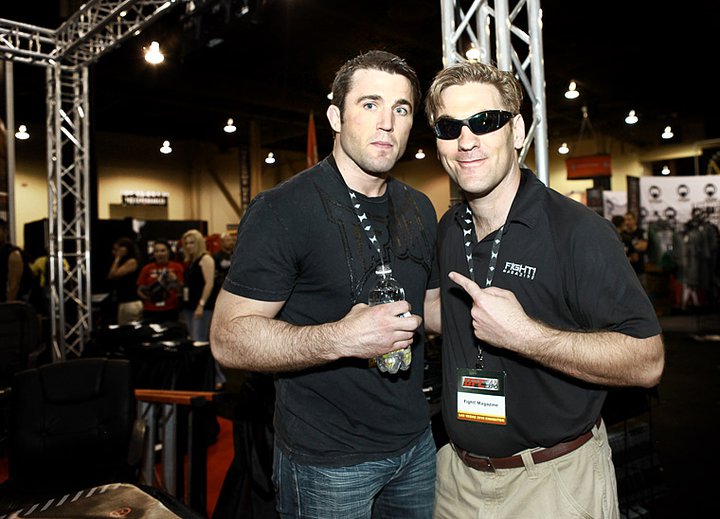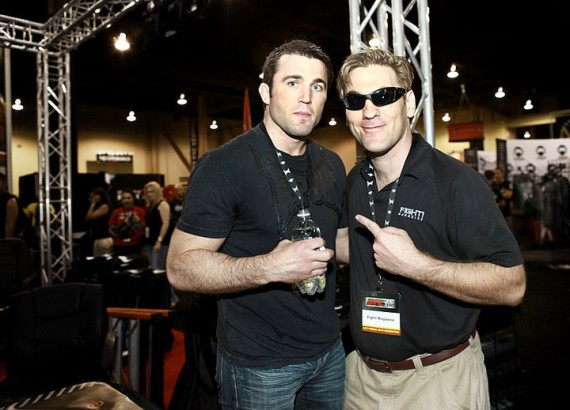
Mixed martial arts (MMA) fighter Chael Sonnen recently appeared before the California State Athletic Commission (CSAC) to appeal a suspension after testing positive for anabolic steroids (testosterone) at UFC 117. Sonnen’s suspension was reduced to six months from one year. The CSAC seemingly accepted Sonnen’s defense of testosterone replacement therapy (TRT). However, they did not exonerate him entirely since he failed to follow proper procedure in notifying the commission of his medical condition.
The Chael Sonnen appeal exposed a commission entirely unprepared to deal with the controversial issue of testosterone replacement therapy.
The TRT exemption will be exploited by MMA athletes in the absence of strict diagnostic criteria for hypogonadism that is reviewed by an independent panel of medical experts familiar with testosterone replacement therapy.
CSAC Executive Director George Dodd acknowledged that the CSAC has an existing policy allowing for the therapeutic use of anabolic steroids (testosterone) for hypogonadism. The exact diagnostic criteria for hypogonadism required by the CSAC to grant a therapeutic use exemption for testosterone remains unclear. The Commission seemed satisfied with the testimony provided by Sonnen’s private physician.
This points to the first problem with TRT in MMA: If the criteria are really so lax, it invites abuse of the TRT therapeutic exemption. This is why…
It is relatively easy for an individual to artificially suppress endogenous testosterone levels. In fact, unscrupulous bodybuilders have been doing this for years in order to ‘trick’ their physicians into prescribing testosterone. It is well-known within the bodybuilding community that anabolic steroid use itself can induce temporary hypogonadism.
Steroid cycles can be specifically designed and timed to suppress testosterone levels such that a blood test will return a low testosterone value. Many physicians, unaware of this subterfuge, will be willing to prescribe testosterone based on this reported value. Sonnen’s personal physician testified at the hearing that he was unaware of any drugs that could induce hypogonadism.
Once an exemption is granted for testosterone use, there must be regular monitoring of serum testosterone levels to ensure that T levels in TRT athletes are not chronically elevated above the normal reference range (supraphysiological).
Once an athlete is given the “green light” to use “steroids”, there must be a reliable method to prevent abuse of testosterone beyond physiological replacement dose. It is unclear whether the CSAC has provision in place to address this issue.
The CSAC appeared to confuse serum tests with urine tests during the appeals hearing. Dodd seemed to believe the traditional anti-doping tests, testosterone:epitestosterone (T:E) ratio and carbon isotope ratio (CIR), were adequate and sufficient to prevent such abuse.
TRT can cause an athlete to fail T:E ratio test and TRT (since it involves exogenous testosterone) will obviously cause an athlete to fail the CIR test (which is specifically designed to detect exogenous testosterone). This renders anti-doping urine tests useless in the detection of testosterone abuse for TRT athletes.
It is simply not possible to accurately determine serum testosterone levels or testosterone dose with these urine tests. Serum blood tests must be administered on a regular basis to ensure TRT athletes are not using excessive testosterone.
Testosterone Replacement Therapy (TRT) provides performance enhancing benefits for TRT athletes. Therapeutic use exemptions (TUE) allow athletes to use drugs that are otherwise considered prohibited performance enhancers.
Therapeutic use exemptions for TRT are controversial for good reason – they allow athletes to use anabolic steroids (testosterone) within the anti-doping guidelines.
A strong case can be made for an athlete who requires a specific treatment (testosterone replacement therapy) for a legitimate medical condition (hypogonadism) that can cause significant health problems if left untreated. After all, why should an athlete – due to the nature of his occupation – be denied the same proper medical care available to the layperson?
Anti-doping organizations are presented with an inconvenient problem when appropriate medical care involves the chronic use of a banned performance enhancing drug like testosterone.
Since athletes with low testosterone levels are at a competitive disadvantage, it is often argued that TRT only levels the playing field by returning TRT athletes to “normal” levels shared by their competitors. Is this really true?
In actual practice, TRT athletes may gain an advantage on their non-TRT using competitors. TRT gives an athlete greater control over their T levels by allowing them to adjust T levels to the top of the normal reference range. TRT athletes could achieve T levels higher than they every produced on their own and likely higher than athletes competing without the assistance of TRT. Many TRT experts recommend a testosterone dosage that places their patients in the upper quartile of the reference range. Obviously, it is preferable for an athlete to have serum T levels at 1000 ng/dl rather than 500 ng/dl.
The California State Athletic Commission faces several challenges in developing guidelines to regulate therapeutic use exemptions for testosterone replacement therapy. They need to create diagnostic criteria for hypogonadism that athletes must meet to obtain TUEs and they must establish be regular monitoring of serum testosterone levels once granted a TUE. And I guess they must participate in the anti-doping establishment’s myth that TRT does not offer performance-enhancing advantages when used to bump serum testosterone levels to the upper limit of the normal range.

About the author
Millard writes about anabolic steroids and performance enhancing drugs and their use and impact in sport and society. He discusses the medical and non-medical uses of anabolic-androgenic steroids while advocating a harm reduction approach to steroid education.

No replies yet
Loading new replies...
Join the full discussion at the MESO-Rx →